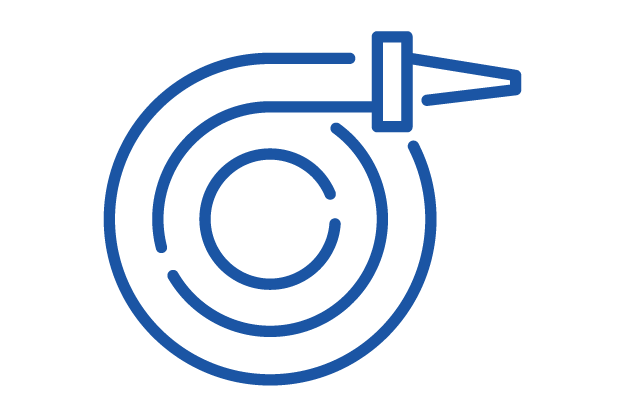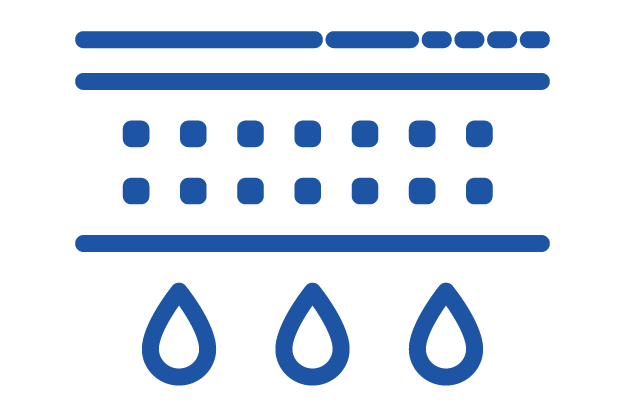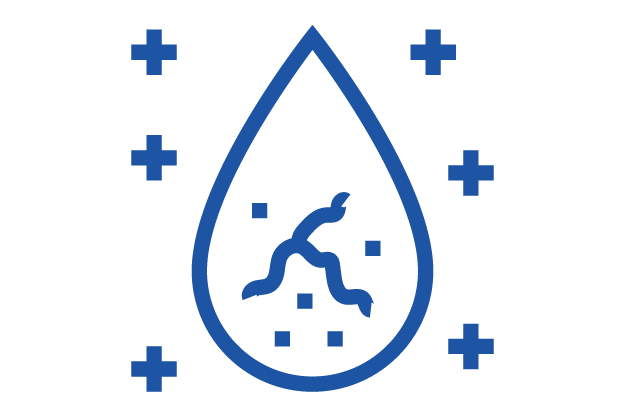WHAT’S MY PFAS RESPONSIBILITY?
Home / Industries & Entities / Industry and Manufacturing
Thanks to high-profile lawsuits and growing public awareness, many manufacturers and industry leaders are assessing their liability. Here's what you need to know.
SOURCES OF PFAS
What’s My PFAS Responsibility? PFAS are a diverse group of compounds, which are resistant to heat, water, and oil. These properties have made PFAS ideal for use in hundreds of industrial applications and consumer products, including certain paper food packaging, firefighting foams, carpeting, apparel, and upholstery.
HOW ARE PFAS REGULATED?
In the 2021-2024 PFAS Strategic Roadmap, the U.S. EPA resolved to use a number of existing programs to monitor and control PFAS contamination by industry. Since 2021, the EPA has made PFAS-related changes in several key areas.
COMPREHENSIVE ENVIRONMENTAL RESPONSE COMPENSATION AND LIABILITY ACT (CERCLA)
In 2024, the EPA finalized a rule designating PFOA and PFOS hazardous substances under CERCLA, also known as Superfund. This action grants the EPA authority to issue cleanup orders for PFOA and PFOS releases. They may also investigate or require investigations of sites suspected or known to be contaminated with PFAS, order clean-up and remediation, and to charge the costs to responsible parties. Current property owners could incur some liability, even if they never produced or handled the PFAS.
PFAS TREATABILITY STUDIES
Pace® PFAS Treatability Studies help clients evaluate the effectiveness of technologies and strategies for PFAS removal, remediation, and destruction. By conducting a Treatability Study, environmental engineers and scientists can optimize remediation strategies, ensure regulatory compliance, and build public trust.
EFFLUENT LIMITATION GUIDELINES (ELGS)
ELGs establish national technology-based regulatory limits for pollutants in wastewater discharge. The U.S EPA updates its ELG Plan every two years, and the Effluent Guidelines Program Plan 15 was finalized in January of 2023. It’s important to note that Plan 15 does not set ELGs. It identifies the industries for which ELGs will be set. Plan 15 calls for ELGs to be set for discharge from landfills. Once defined, these ELGs will be the first PFAS-related ELGs for wastewater discharge. Plan 15 also calls for more research on PFAS in wastewater discharge from textile mills as well as wastewater discharge from industry sent to publicly owned treatment works (POTW). The EPA will also continue to investigate wastewater discharge from other industries such as organic chemicals, synthetic fibers, plastics, airports, and more.
NATIONAL POLLUTANT DISCHARGE ELIMINATION SYSTEM (NPDES)
NPDES is a permitting program designed to regulate the discharge of pollutants into the waters of the U.S. (WOTUS). In the 2021-2024 PFAS Strategic Roadmap, the EPA announced its intention to use NPDES permitting to reduce PFAS discharges to waterways. In 2022, they issued a memo detailing the plan as well as guidance to states that are authorized to manage their own NPDES permitting programs. Use of EPA Draft Method 1633 is strongly encouraged for NPDES permitting, with Draft Method 1621 as a supplemental method for analyzing total adsorbable organic fluorine in wastewater. Pace® offers both of these methods.TOXIC RELEASE INVENTORY (TRI)
TRI tracks toxic chemical releases from industrial facilities into the environment. For reporting year 2023, covered entities will need to report on 180 PFAS. In January of 2023, the U.S. EPA announced an additional 9 PFAS would be added for reporting year 2024, bringing the total number of PFAS to 189. In addition, at the end of 2022, the EPA announced its intention to classify PFAS as “Chemicals of Concern”, which would automatically remove any exemptions for releases involving minimal quantities.
TOXIC SUBSTANCES CONTROL ACT (TSCA)
What’s My PFAS Responsibility? TSCA grants the U.S. EPA the authority to establish reporting, record-keeping, and testing requirements for chemical compounds. The TSCA Inventory is a published list of the chemical substances manufactured or processed (including imports) in the U.S. In 2023, the EPA finalized a reporting rule requiring manufacturers and importers of PFAS or PFAS-containing articles in any year since January 1, 2011, to electronically report information regarding PFAS uses, production volumes, disposal, exposures, and hazards. In addition to proving PFAS Testing Services, Pace® Regulatory Services can help manufacturers and importers meet the new reporting requirements.
RESOURCE CONSERVATION AND RECOVERY ACT (RCRA)
The EPA has also proposed designating PFOA, PFOS, PFBS, and the GenX Chemicals as hazardous substances under RCRA, legislation which governs the disposal of solid and hazardous waste. What’s My PFAS Responsibility? Designating PFAS a hazardous substance under RCRA allows the EPA much greater control over the entire lifecycle of PFAS: manufacturing, transportation, treatment, storage, and disposal.
OTHER PROGRAMS AT THE EPA’S DISPOSAL
The programs listed above are far from the only tools the EPA has at its disposal to monitor and manage industrial discharges of PFAS. Download our legislation summary for more.
EPA TARGETS KEY INDUSTRIES
In addition to using current programs to monitor PFAS discharge across industry, the EPA plans to target several industries for more intensive scrutiny. Industries that are known to contribute to PFAS pollution will be targeted for future rulemaking. Those about which less is known will be the subject of additional study and data reviews.
REQUEST A BRIEFING
What’s My PFAS Responsibility? The EPA’s 2021-2024 Strategic Roadmap calls for holding industry accountable for its contribution to PFAS contamination. As you put together your risk mitigation strategy, our PFAS compliance experts would be happy to schedule a personalized briefing for your team on the various state and federal programs that may impact your organization.
WHAT SHOULD YOU TEST?
PFAS can enter the local water supply, ground and surface waters, soil, vegetation, and animal tissue through a variety of industrial pathways.

AFFF
Aqueous Film-Forming Foam (AFFF) is great for putting out chemical fires, but it is a major documented source of PFAS contamination.

Air & Emissions
EPA researchers have found that point and non-point emissions can be a significant source of PFAS.

Bedrock
Underlying bedrock can make analyzing chemical contamination challenging, but scientists have developed new sampling methods.

Drinking Water
Analyzing an on-site potable water source for PFAS can help protect employee health.

Ground & Surface Waters
Ground and surface water can become contaminated from the use and disposal of PFAS.

Industrial Products
Testing industrial products, such as plastics and packaging, can help uncover sources of PFAS.

Landfill Leachate
Disposal of products containing PFAS in a landfill can produce contaminated leachate.

Soil
Local soil can become contaminated through disposal or accidental discharges of PFAS.

Wastewater
Industrial wastewater is frequently the target of programs designs to monitor and manage PFAS.

Wastewater Sludge
The sludge produced from contaminated wastewater is often contaminated as well.
PFAS TEST METHODS
Pace® offers a wide array of test methods suitable for testing the matrices listed above and can adapt methods as needed to meet project requirements. For more details, download our test methods guide for industry.
TARGETING NON-TARGETED PFAS
Every day brings news of new litigation against PFAS chemical producers and those who use PFAS compounds in their operations. Even while they seek to mitigate the damage, industry leaders need to bear in mind that the chemicals commonly named in these lawsuits are less than 0.1 percent of the 4,700+ CAS-registered PFAS compounds.
Although toxicity levels have yet to be determined for the vast majority of PFAS compounds, it is generally recognized that PFAS all share a similar structure and that the health risks associated with one PFAS are expected for other PFAS as well. What’s My PFAS Responsibility? This means that manufacturers of PFAS compounds, as well as those using PFAS chemicals in their production and operations, could be facing ever-increasing litigation as public awareness of the PFAS problem grows.
Various test methods can be used to detect a wide range of non-targeted PFAS and Total Organic Fluorine (TOF). Learn more about these methods on our PFAS Test Methods page.
THE PROBLEM OF PFAS PRECURSORS
PFAS precursors are chemicals that can be converted into PFAS through common processes such as wastewater treatment. What’s My PFAS Responsibility? Although PFAS precursors are not yet regulated, concerns regarding their contribution to PFAS contamination are growing. TOP Assay is a method that can be used to quantitate PFAS precursors in industrial wastewater discharge.
SPECIAL PROJECTS: AIR & STACK EMISSIONS
Pace® has a long history of sampling stack emissions and ambient air for a wide range of contaminants. We’ve leveraged our expertise to develop reliable methods for sampling and testing air and emissions for PFAS compounds. One of the most common examples of air emissions testing for PFAS involves incinerator stack emissions from manufacturing and industrial sites. This requires specialized sampling equipment to be placed in the stack by qualified personnel. Samples are then tested using traditional PFAS by LC MS/MS Isotope Dilution methods. Not all labs that offer PFAS test methods are equipped to test stack emissions for contamination.
THE PFAS PROBLEM WON’T GO AWAY
REASONS TO CHOOSE PACE®

EXPERIENCED
Pace® has been an industry leader in persistent organic pollutant testing for over three decades.
CERTIFIED
We’re certified/accredited by NELAC, ISO, DOD, DOE, and in every state with a PFAS lab certification program.

RELIABLE
For emergencies, our Rapid Response Team can provide defensible results in as little as 24 hours.

COMMITTED
We are committed to helping our customers advance their important work through building strong relationships, delivering upon expectations, and providing exceptional customer service.

ADVANCED
We can test for PFAS in both solid and aqueous matrices, including potable and non-potable waters, soils, and biota.

INNOVATIVE
We’re on the leading edge of science, working with EPA, DOD, ASTM, and others to develop new methods for analyzing PFAS.




